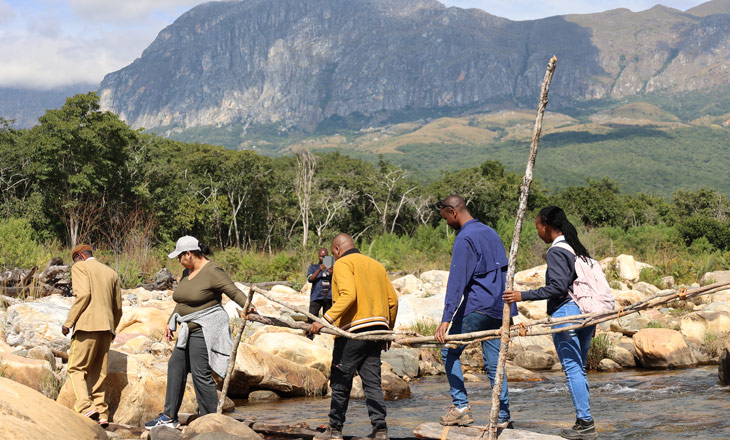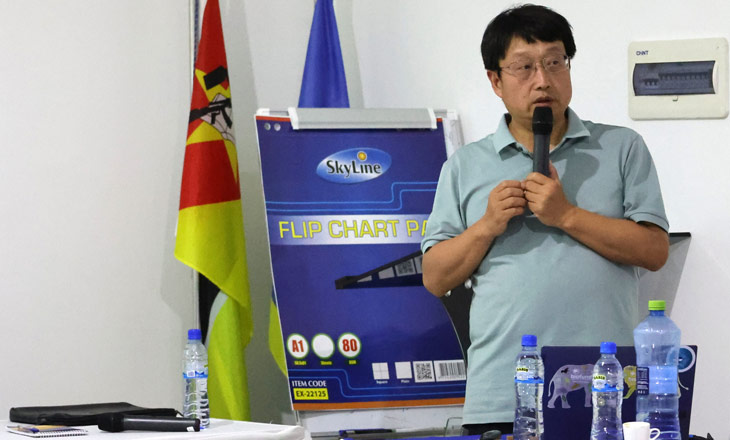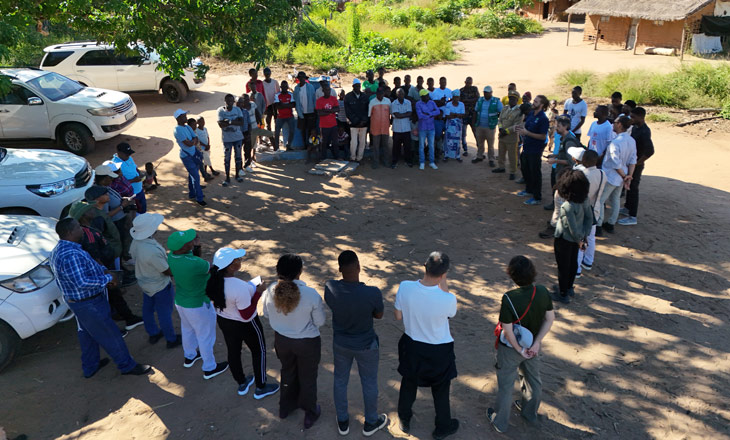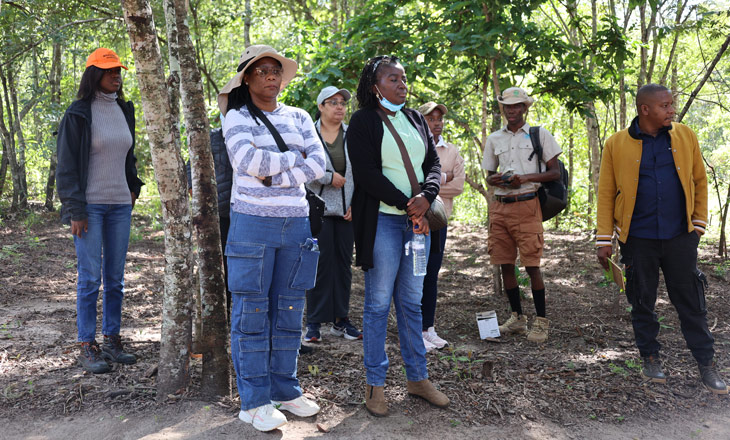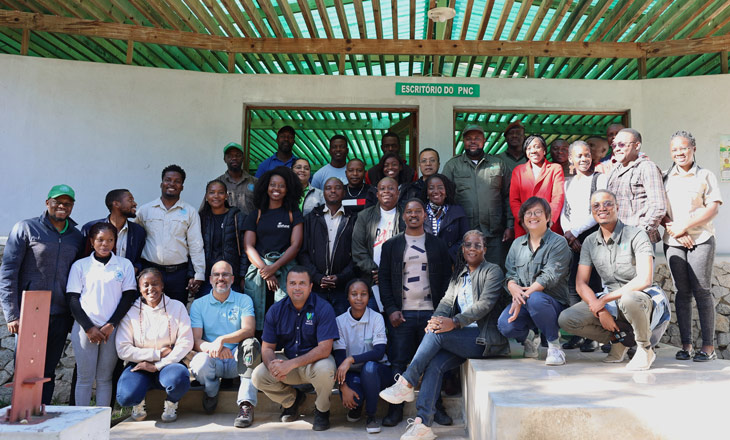As part of the implementation of the Biodiversity Offsets Directive (Ministerial Diploma No. 55/2022 of 19 May), the Government of Mozambique, through the COMBO+ Program, conducted two technical field visits between 13 and 21 May 2025: one in Chimanimani National Park (CNP) in Sussundenga District, Manica Province, and another in the localities of Cabaceira Grande in Mossuril District and Janga in Nacala-Porto District, Nampula Province. These visits aimed to share experiences, identify best practices and consolidating technical and institutional capacities for the implementation of biodiversity offsets in the country, particularly with the involvement of local communities.
Published at 27/05/2025
Mozambique strengthens practical exchange of experience with key stakeholders to support biodiversity offsets implementation through field visits to Chimanimani National Park and the Districts of Nacala and Mossuril
In each site, the visit gathered over 50 participants, including representatives from central and provincial government, the private sector, civil society, and local communities. These exchanges helped to deepen the private sector’s technical understanding of the planning, implementation, and monitoring mechanisms of Biodiversity Offset Management Plans (BOMPs), which aims to offset environmental residual negative impacts of economic development projects. The visits reinforced the importance of prioritizing underfunded Conservation Areas (CAs) that are not achieving their conservation objectives, and Key Biodiversity Areas (KBAs) under threat of degradation, as priority locations for the implementation of future biodiversity offsets, as outlined in the Biodiversity Offsets Directive.
During the visit to Nacala-Porto, participants explored an area in Janga, currently under validation as a KBA. This area represents a unique ecosystem in Mozambique and the wider eastern African coastal region, composed of coral debris hosting a network of over twenty-three lagoons interconnected by underground tunnels linked to the sea. The site harbors many terrestrial and aquatic species, some of which may be new to science. It is also characterized by highly vulnerable and distinctive vegetation, including endemic and threatened species. However, the area is under significant threat due to charcoal production and limestone mining.
Community engagement was a key focus throughout the field visits. Participants observed activities led by local community members that involved the production and planting of seedlings (miombo and mangrove forests), promoting alternative livelihood models, and reinforcing the role of communities as implementers of biodiversity offsets.
The visit also included representatives from WCS China, accompanied by academic expert Yunju Li from the Kunming Institute of Botany of the Chinese Academy of Sciences, specialized in restoration of degraded ecosystem. During the technical session in Nacala, Professor Yunju Li shared his experience in implementing restoration activities linked to mine closure, highlighting methodologies, outcomes, and lessons learned. His contributions provided comparative perspectives on species selection for restoration, ecological rehabilitation techniques, monitoring approaches, and institutional collaboration, demonstrating how technical rigor and stakeholder coordination can ensure real, measurable biodiversity gains.
These visits were made possible with the financial support from the French Development Agency (AFD) and the French Facility for Global Environment (FFEM) through the COMBO+ Program and the CBDC Project, as well as from the Blue Action Fund and the Government of Sweden through the Biodiversity Conservation Program.

